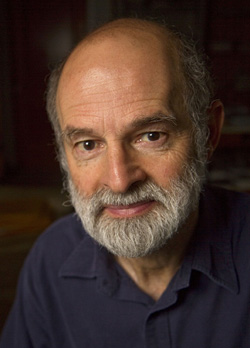Campus News
Two UC Santa Cruz Earth scientists honored by American Geophysical Union
Gary Glatzmaier and Thorne Lay will receive AGU medals in recognition of their breakthrough achievements in Earth science.


The American Geophysical Union (AGU) has awarded medals to two UC Santa Cruz scientists in recognition of their breakthrough achievements in Earth science. Gary Glatzmaier and Thorne Lay, both professors of Earth and planetary sciences at UCSC, will receive the AGU’s John Adam Fleming Medal and Inge Lehmann Medal, respectively.
For Lay, the 2014 Lehmann Medal is his third major honor this year. In April, he was elected to the National Academy of Sciences and awarded the Harry Fielding Reid Medal of the Seismological Society of America. Lay is a leading authority on the physics of earthquake faulting and the use of seismic waves to study the deep structure of the Earth’s interior. The Lehmann Medal recognizes his work using seismic observations to improve the understanding of structure and processes in the deep mantle, including a region half-way to the center of the Earth at the boundary between the core and the mantle. A fellow of the American Academy of Arts and Sciences, the American Association for the Advancement of Science, and the AGU, Lay joined the UCSC faculty in 1989.
The 2014 Fleming Medal recognizes Glatzmaier for his research on Earth’s magnetic field and the geodynamo in Earth’s core that maintains it. Glatzmaier developed the first dynamically consistent computer simulations of the geodynamo, revealing the origin of the geomagnetic field and helping to explain reversals of the magnetic field seen in the geologic record. He has also developed numerical models to study the interiors of the sun and other stars, as well as giant gas planets like Jupiter and Saturn. Glatzmaier was elected to the National Academy of Sciences in 2010 and is a fellow of the American Academy of Arts and Sciences, Los Alamos National Laboratory, and AGU. He joined the UCSC faculty in 1998.
Glatzmaier and Lay will be honored at the 2014 AGU Fall Meeting in San Francisco during the Honors Tribute, which will take place on Wednesday, December 17.
The Fleming Medal, established in 1960, is named in honor of John Adam Fleming, who made important contributions to the establishment of magnetic standards and measurements. It is given annually to one honoree for “original research and technical leadership in geomagnetism, atmospheric electricity, aeronomy, space physics, and related sciences.”
The Lehmann Medal, established in 1995, is named in honor of Inge Lehmann, who made many contributions to the understanding of the Earth’s deep interior, including her discovery of the Earth’s inner core in 1936. It is given annually in recognition for “outstanding contributions to the understanding of the structure, composition, and dynamics of the Earth’s mantle and core.”
The American Geophysical Union is a not-for-profit, professional, scientific organization representing more than 62,000 members in 144 countries.